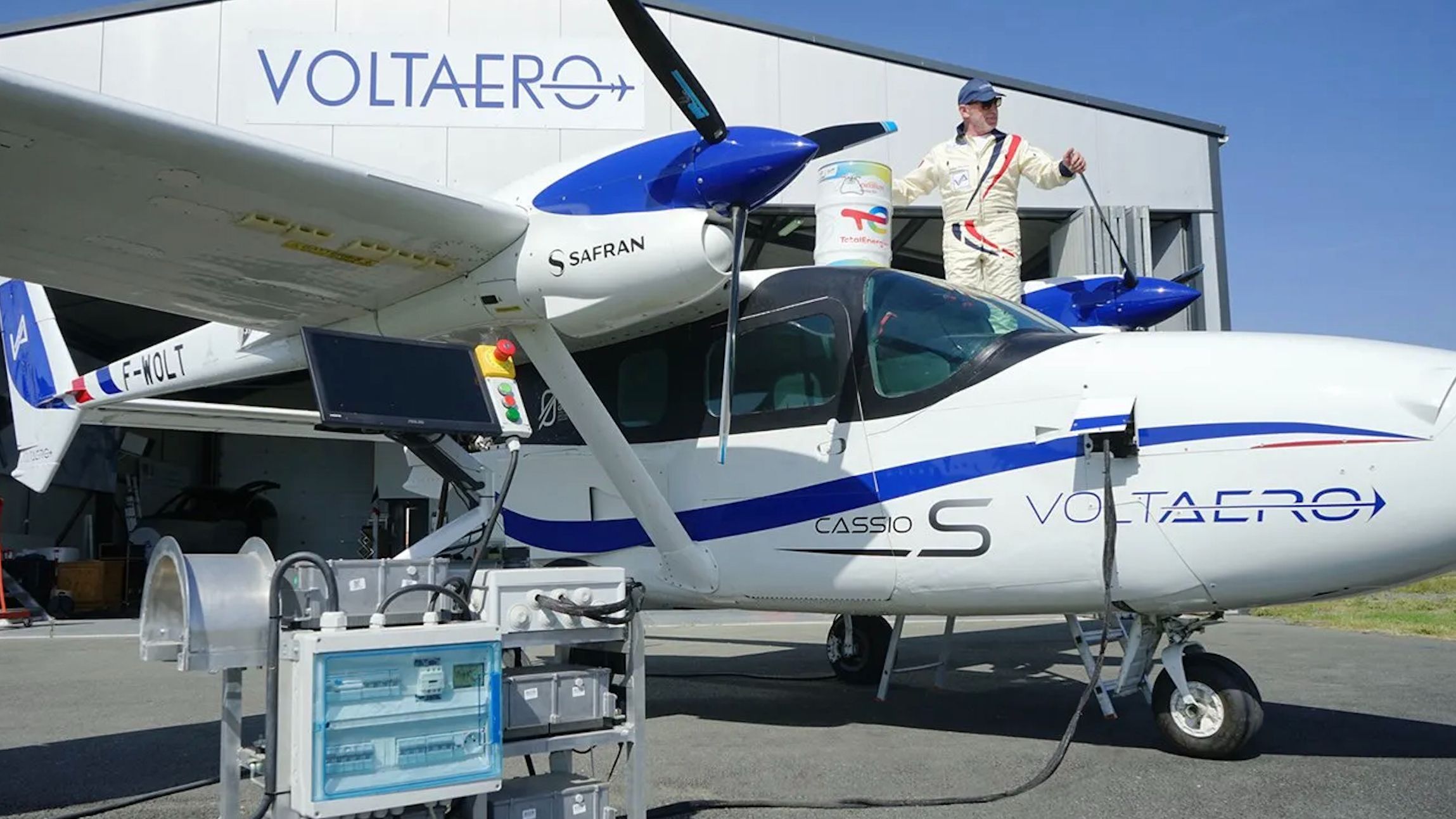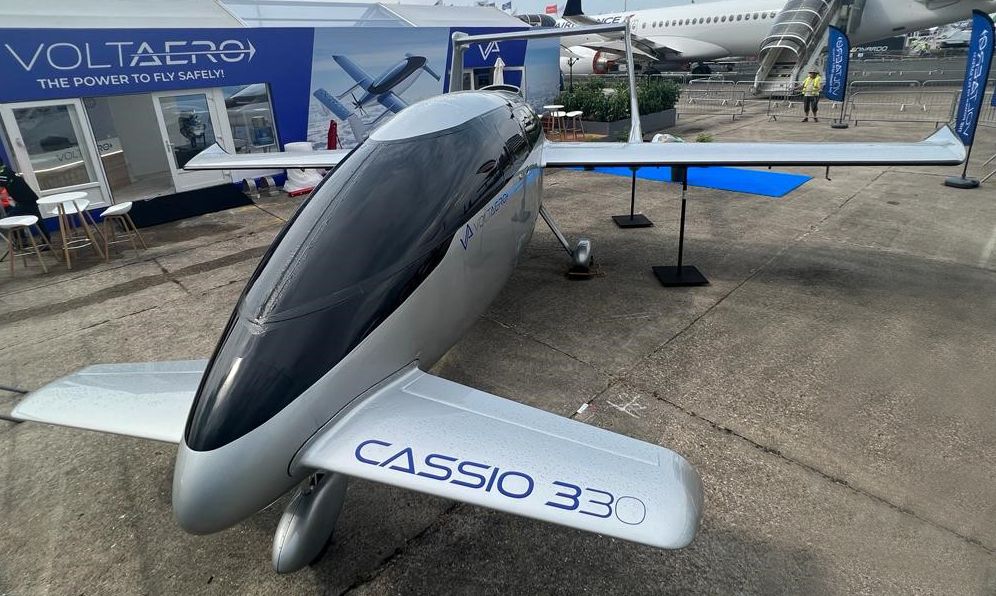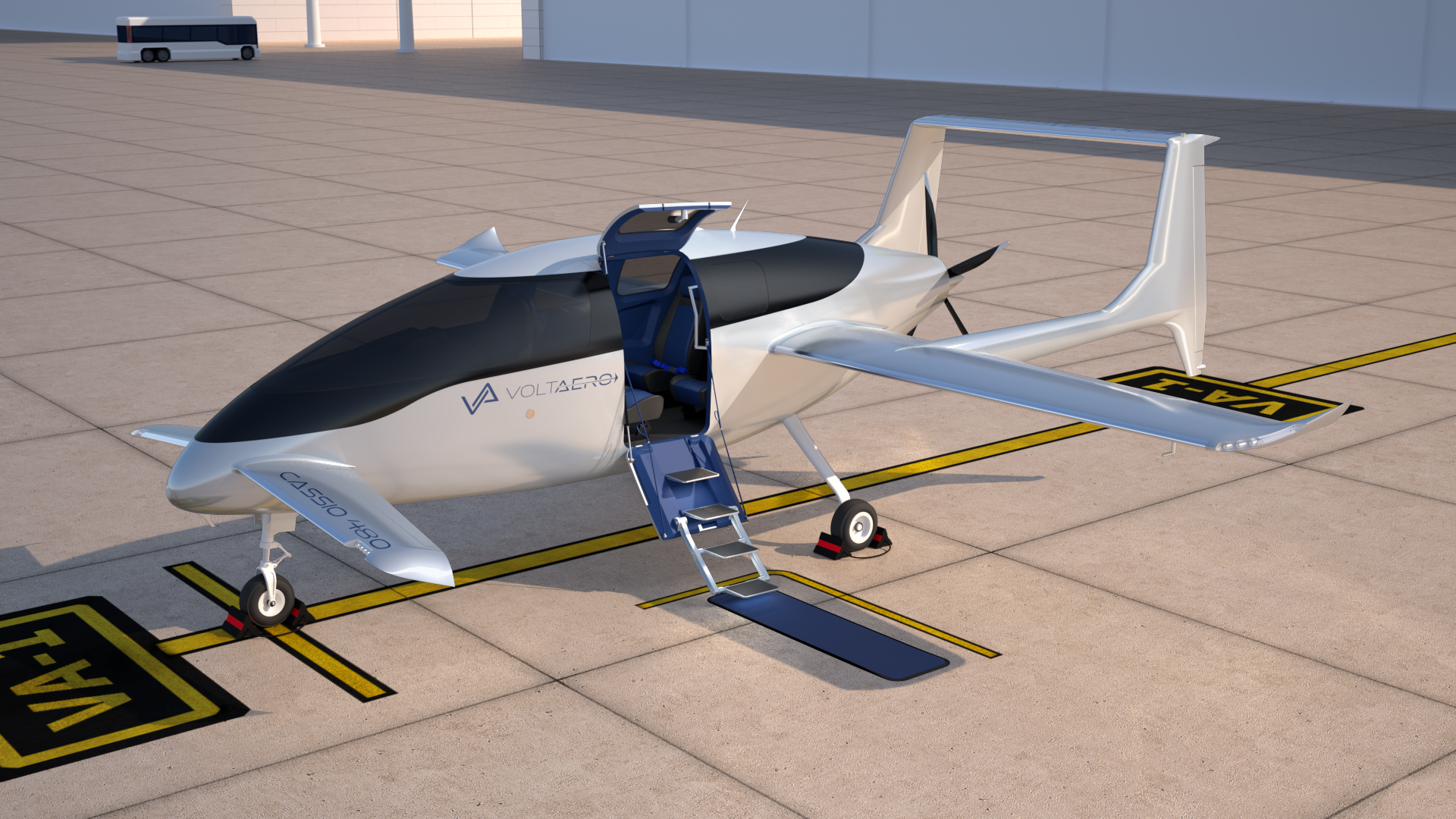Summary
- VoltAero successfully flew its Cassio S testbed airplane with 100% sustainable aviation fuel (SAF) provided by TotalEnergies.
- The SAF used, Excellium Racing 100, is made from bioethanol produced from waste from French vineyards, reducing carbon emissions by at least 65% compared to fossil fuels.
- The Cassio family of aircraft, including the Cassio 330, Cassio 480, and Cassio 600, will feature electric-hybrid propulsion, using an electric motor for primary flight and a range-extending internal combustion engine.
It almost seems like an oxymoron to have sustainable aviation fuel paired with an electric aircraft in the same sentence unless we are talking about the fuel used in an electric-hybrid powertrain.
Last week, in what it described as a world’s first, VoltAero flew its Cassio S testbed airplane with 100% sustainable aviation fuel (SAF) provided by TotalEnergies. Operated from VoltAero’s development facility at Royan in France, the flight utilized the hybrid powertrain’s electric mode and its internal combustion engine, which was fuelled by TotalEnergies Excellium Racing 100.
Turning wine [waste] into SAF
The choice of Excellium Racing 100 seems perfectly correct for the French manufacturer, given that it is made from bioethanol produced from waste from French vineyards. The wine waste turned into SAF is used in the famous 24 Hours of Le Mans endurance sports car race and reduces carbon emissions by at least 65% over its entire lifecycle when compared with fossil fuel.
Image: VoltAero
VoltAero is developing the Cassio family of aircraft for use by regional commercial operators, air taxi/charter companies and private owners. It will also be marketed as a utility aircraft for cargo, postal delivery and medical evacuation missions. The electric-hybrid propulsion will be integrated into a purpose-designed airframe. This demonstration flight was performed using VoltAero’s Cassio S testbed aircraft to validate both the electric-hybrid powertrain and the application of SAF.
VoltAero CEO and Chief Technology Officer Jean Botti said the achievement marked an advancement toward the future use of biofuel in general aviation, which complements the ongoing introduction of sustainable aviation fuel.
“Based on initial test results, we calculated a truly impressive CO2 reduction of approximately 80% while operating the Cassio powertrain in its electric-hybrid mode and with the internal combustion engine fueled by TotalEnergies’ Excellium Racing 100.
“It underscores the opportunity for production Cassio aircraft to represent a major step closer to aviation’s decarbonization goals by replacing standard Avgas 100 high-octane fuel for aviation piston engines.”
A family of Cassio aircraft
Cassio aircraft will use an electric motor in the fuselage-mounted hybrid propulsion unit for all electric-powered taxi, take off, primary flight on flights of less than 150 kilometers (93 miles) and landing. The hybrid feature brings in the internal combustion engine as a range extender to recharge the batteries during flight and as a fail-safe backup should anything malfunction in the electric propulsion system.
Image VoltAero
At this year’s Paris Air Show, VoltAero unveiled its first Cassio 330 electric hybrid aircraft, which is expected to have its maiden flight this year and be used to validate the overall airframe configuration. A second Cassio 330 prototype is due to have its first flight in the second quarter of 2024 and will be the aircraft used for the certification program.
VoltAero’s Cassio will be developed as a family of three aircraft sizes, the first being the Cassio 330. It will be a four/five-seater with a combined electric-hybrid propulsion power of 330 kilowatts and will be followed by the six-seater Cassio 480 with a combined electric-hybrid propulsion power of 480 kilowatts.
The largest aircraft, the Cassio 600, will have 10/12 seats, and to accommodate the extra capacity, the hybrid-electric propulsion will be increased to 600 kilowatts.



